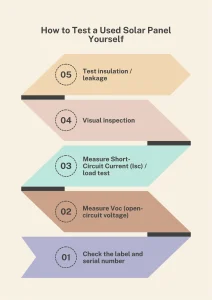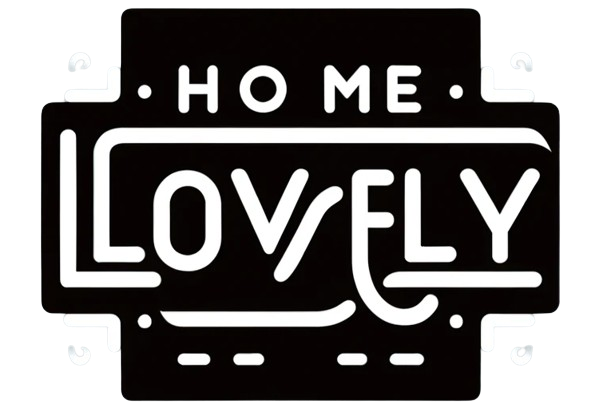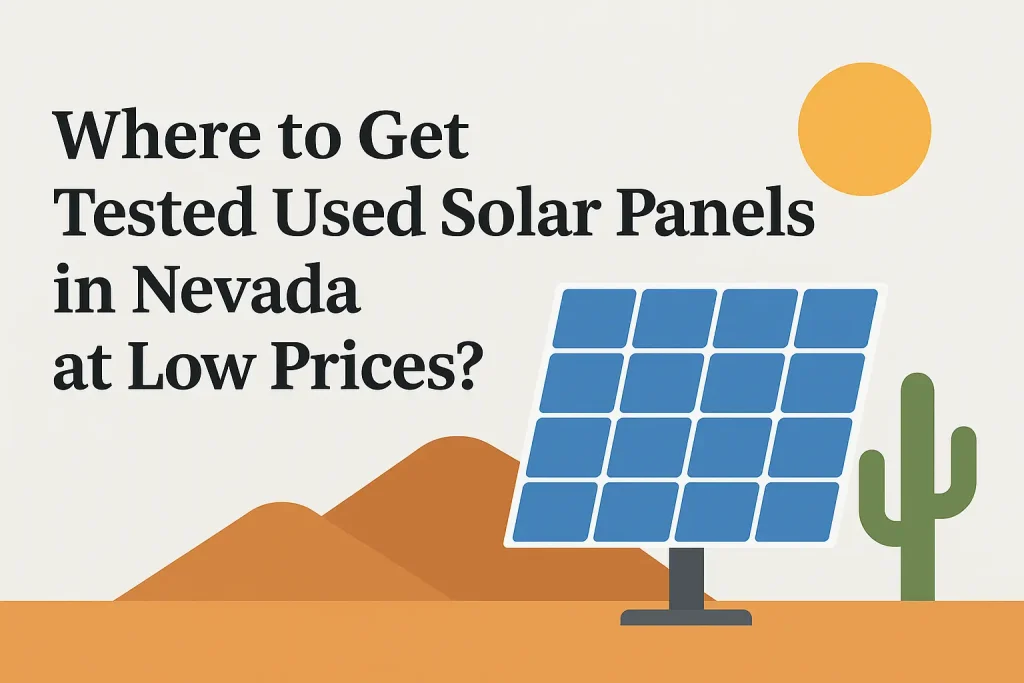New solar systems can be expensive at first. This is why many homeowners consider used solar panels to reduce costs but still use clean energy.
New residential systems still cost about $2.5−$2.6 per watt before incentives. Used solar panels, however, often sell for only $0.05−$0.60 per watt. This is a massive difference in cost. It can make solar affordable for more people.
Nevada is a perfect place for this strategy. The state has excellent sun for solar power. Electricity prices are also a concern for household budgets. Using Nevada’s abundant sun with cheaper equipment can greatly improve how fast you recoup your investment especially if you buy tested used panels. These panels should still perform near their original ratings.
This guide focuses on where to get tested used solar panels in Nevada at low prices, how to vet listings (what test data to request, what defects to avoid), typical pricing by condition and brand, permitting and utility considerations that can trip up second-hand installs, and how to minimize risk while maximizing savings.
Why Consider Used Solar Panels in Nevada?
Nevada is one of the strongest U.S. markets for solar energy. This is due to abundant sunlight and favorable climate. The state has a supportive renewable energy landscape. The state’s sun-bathed deserts offer some of the best solar potential in the nation. Homeowners in Nevada benefit from long solar hours and minimal cloud cover. This makes rooftop or ground-mounted systems more productive throughout the year.
According to EcoWatch, the state ranks sixth nationally in solar deployments. This reflects both its natural solar capacity and market adoption.
The appeal of used solar panels is clear from a cost perspective. New solar modules currently average about $2.75 per watt in U.S. markets before incentives. Used solar panels in the resale market are often priced lower. They range between $0.05 and $0.60 per watt. This big price difference allows more solar adoption. It makes solar an option for budgets that cannot afford new systems.

However, buying used solar panels has risks. The risks include efficiency loss over time and no manufacturer warranty. There are uncertainties about the panels’ prior condition. Improper testing or mislabeling are potential issues. There can be problems with inspection or utility approval. That is why focusing on tested used solar panels is crucial. These panels have documented electrical performance and inspection reports. This helps reduce risk. It gives you confidence that your purchase will provide usable energy for years.
What “Tested Used Solar Panels” Means — Criteria & Standards
“Tested used solar panels” refers to secondhand photovoltaic modules that have undergone inspection and performance verification before being sold. Unlike unvetted used panels, these units come with documented test results—confirming that they still deliver power near specification, are electrically safe, and free of major defects. Reputable resellers now routinely insist on testing to build buyer confidence.
Because there is no global regulatory standard for reusing solar panels, most testing is done voluntarily by sellers. That means credible panels should come with full test reports and datasheet references.
Key Test Metrics & Inspections
When evaluating a “tested used” panel, these metrics and checks matter most:
Open-Circuit Voltage (Voc)
The voltage between the panel’s terminals under no load. It should nearly match—or be within a tolerable deviation from—the original spec. Significant divergence may indicate internal damage or degradation.
Short-Circuit Current (Isc)
The maximum current flow when the terminals are shorted under full illumination. It helps validate whether the module can carry expected current levels.
Performance Under Load / I-V Curve & STC Comparison
Beyond Voc and Isc, measuring the full I-V curve (current vs. voltage) under Standard Test Conditions (STC) is ideal. This allows comparison of parameters like maximum power point (Pmp), fill factor, and efficiency relative to original specs. Some advanced resellers also run flash testing, wet leakage, and degradation tests.
Visual & Structural Inspection
Modules must be inspected for physical defects:
- Cracks, crazing, delamination, broken glass
- Snail trails, hotspots, burn marks
- Corrosion around busbars, frame, junction box
- Discoloration, browning, polymer degradation
Such defects often precede electrical failure or accelerated power loss.
Acceptable Degradation & Thresholds
A reasonable guideline is less than 10% degradation from original rated capacity, especially for panels under ~10 years old. Panels beyond that often carry greater risk of further decline. Many resellers will refuse panels that deviate significantly beyond this threshold.
Also, note that average module degradation for crystalline silicon is generally expected to fall between 0.5% and 1.9% per year. Modules that deviate considerably beyond that range may be poor candidates for reuse.
Required Documentation & Transparency
Any “tested” used solar panel listing should include:
- Serial number and model number, matching original datasheet
- Original datasheet (manufacturer’s spec document)
- Detailed test report showing Voc, Isc, Pmp, and deviations
- Date of testing, test environment (temperature, irradiance)
- High-resolution photos (front, back, edges, junction box)
- A note of age, operating history, any prior defects or repairs
This kind of transparency separates professional used solar module sellers from risky “as-is” listings.
How to Test a Used Solar Panel Yourself (if Buying Locally)
If you are buying used solar panels locally, you can test them on your own to confirm their condition before you commit to buying. For this, you will need certain tools. The key tools are a digital multimeter (capable of measuring DC voltage and current), an insulation tester, and an optional electronic load (or resistive load) to simulate working conditions.
Step-by-step Procedure
- Check the label and serial number: Verify the panel specifications (Voc, Isc, Pmax) from the original datasheet.
- Measure Voc (open-circuit voltage): Do this under full sun (about 1000 W/m2). Disconnect the panel completely. Measure across its terminals. The Voc should be within about ±10% of the rated value.
- Measure Short-Circuit Current (Isc) / load test: Place the panel in full sun. Short the positive to negative using the meter or load. Read the current. Compare this Isc to the rated Isc.
- Visual inspection: Check for cracks and delamination. Look for hotspots, corrosion, or discoloration (as previously described).
- Test insulation / leakage: Use an insulation tester. This detects moisture entry or insulation failure. Pay special attention to the junction box or frame.

Where to Find Tested Used Solar Panels in Nevada
If you’re looking for tested used solar panels for sale in Nevada, here’s where to look and how to vet each option to reduce risk and maximize value.
Local Resellers, Solar Recycling & Secondary Market Companies
One top lead is Solar Recycling Company in Nevada. They accept surplus new and used solar panels and equipment, operating both as a recycling outfit and a secondary-market seller. They offer nationwide shipping, giving you access from within Nevada. Although they typically focus on larger lots (e.g. 100+ panels), smaller buyers may connect with them for partial orders and test data requests.
Another contact is Recycle PV Solar LLC, which is based in Nevada and handles module recycling and resale of usable panels. They may serve as a source or referral point for working panels in the state.
When dealing with any local reseller or recycler, always ask for full test reports, high-resolution photos, and any warranty or refurbishing documentation before purchase. Use the visual & electrical criteria from earlier sections to cross-verify.
Online National Sellers That Ship to Nevada
National B2B platforms like EnergyBin specialize in solar resale, repair, and recycling markets. You can filter listings by “tested” or “certified” modules and check seller ratings and equipment history.
Additionally, many used or open-box solar panels appear on platforms like eBay, often labeled “tested used solar panels.” ShopSolarKits and similar solar parts vendors occasionally offer refurbished or used modules. But you must insist on test data and compare to original datasheet specs.
Auctions, Surplus & Decommissioned Projects
Check state or municipal auctions (public works, energy departments) for solar equipment liquidation. In large solar farms or utility-scale projects, periodic upgrades or decommissioning may result in sales of used modules. These are often under-advertised, so network with solar contractors, utilities, or project owners to get alerts ahead of listing.
Trade Shows, Conferences & Networking
Attend regional energy trade shows or Nevada solar / renewable energy conferences to meet wholesalers, recyclers, and panel brokers who carry used inventory. Engage with local solar associations or Meetup groups because contractors sometimes offload leftovers or panel lots after projects.
Networking may even lead you to “off-books” stock or leftovers from rooftop installers. They often prefer quick sales rather than storing panels.
How to Assess & Negotiate a Low Price
You need benchmarks, negotiation power, and openness to get a fair price for used solar panels.
Benchmark the Market Price
The used solar resale market generally ranges from $0.05 to $0.60 per watt. This depends on the panel’s age, condition, brand, and certification. Compare this to the cost of new panels. New panels average about $2.75/W (before incentives). This comparison helps you understand the amount of savings.
Adjust Price for Condition
You should ask for a deeper discount if a panel has more degradation. This is also true if it has more defects or is missing certifications. Ask for test data (Voc, Isc, Pmp) and photos. Also ask for the date the testing was done. Panels that lack solid documentation should be cheaper. They carry a higher risk.
Bundle and Bulk Deals
Sellers often offer much better unit pricing. This happens if you buy many modules at once. This is better than buying single deals.
Account for Shipping and Handling
Poor packaging or transport damage can lower the actual value. Ask who pays these costs. Inspect the units right away when they arrive.
Leave the Negotiating Room
Start negotiating at a price lower than your maximum acceptable price. This is whether you buy privately or from a local reseller. This allows room for counteroffers. Use any test data deviations as negotiation points. Shipping risk or missing paperwork can also be used.
FAQs about Tested Used Solar Panels
Can used solar panels still produce enough power?
Yes, used solar panels can still produce substantial output if their degradation is small. Research and industry data show they degrade by about 0.5% per year. This means panels under 10 years old might only lose 5% of their output. They can still provide efficient performance for many years.
How much should I pay for used solar panels in Nevada?
Expect to pay between $0.05 and $0.60 per watt for used modules. These must be tested modules. The price depends on the brand, age, and condition. It also depends on how thoroughly they have been tested. Always compare this to the cost of new panels. New panels often cost more than $2/W. This helps you understand your potential savings.
Will my utility accept panels without original labels or test reports?
They might not. Some utilities and inspectors require certain items to approve grid connection. These include UL listing or manufacturer labeling. They also require documented test reports. In Nevada, net metering and interconnection rules may reject modules. They may reject modules that are unlabeled or unverified. Always check local county codes before installation. Also check utility requirements before installing used solar panels.
What warranties come with used solar panels?
Most used solar panels do not come with manufacturer warranties. Warranties are typically not transferable. Some refurbished sellers or resellers may offer limited warranties. These might be for 6 to 24 months. However, these are rare. Always ask for written documentation of any offered warranty before buying.
Is it safe to install used solar panels myself?
Technically skilled DIY people might do it. However, it is risky. Self-installation can violate electrical codes and void insurance. It might fail utility approval for grid tie. Hiring a licensed electrician or solar professional is strongly recommended for installation. This ensures safety, compliance, and successful connection.


